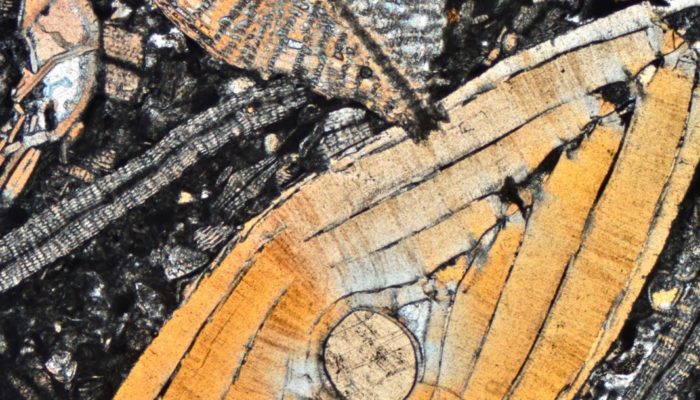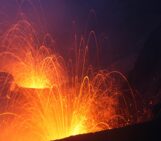
Besides for the purposes of documenting my research, I like to take photos of rocks under the microscope also because of their aesthetic appeal. It’s an hidden, marvelous world.
These flying-saucer-looking objects are in fact the fossil skeletons of a Nummulites (the larger) and a Discocyclina (the one on top left), both belong to the phylum of Foraminifera. These single-celled organisms occupyied an important ecological niche of shallow and warm marine habitats during the Tertiary period, after the disappearance of dinosaurs. After their death, these variously and elegantly crafted, disk-shaped shells accumulated on the sea floor, forming thick piles of sediments, subsequently lithified into limestones.
Nummulite-bearing limestones are widespread around the Mediterranean. In Egypt they were used for the building of the pyramid of Gizah. In northeastern Italy these rocks were intensely quarried as ornamental stones since Roman times and used in villas, palaces and for statues by artists such as Palladio and Sansovino. This rock sample was collected for the project GardaLakeArtRock by my colleague Nereo Preto, at Nago, on the northern tip of Lake Garda (Italy, coordinates N.45°52’45.8″ E010°53’11.1″). The sampled rock formation is the Nago limestone, of medium-upper Eocene age (42-34 Ma). Width of view 5.4 mm.
Description by Bernardo Cesare, University of Padova, Italy
www.microckscopica.org
.
Imaggeo is the EGU’s online open access geosciences image repository. All geoscientists (and others) can submit their photographs and videos to this repository and, since it is open access, these images can be used for free by scientists for their presentations or publications, by educators and the general public, and some images can even be used freely for commercial purposes. Photographers also retain full rights of use, as Imaggeo images are licensed and distributed by the EGU under a Creative Commons licence. Submit your photos at http://imaggeo.egu.eu/upload/.





Florencia
What are the minerals that replace de nummulite’s skeletom?